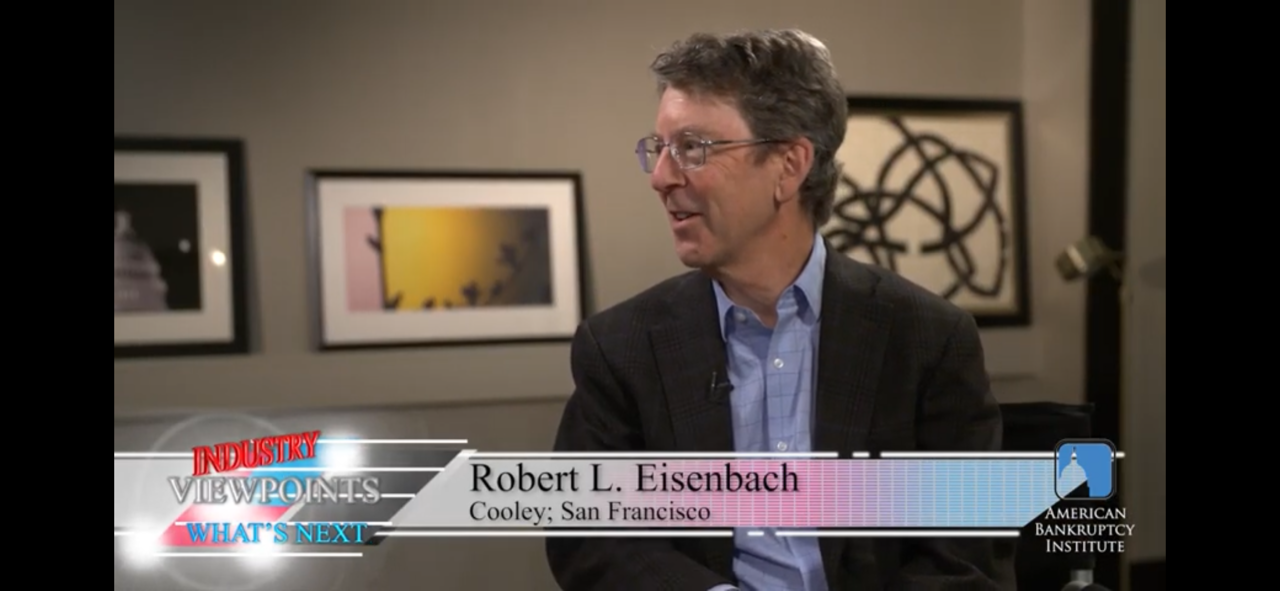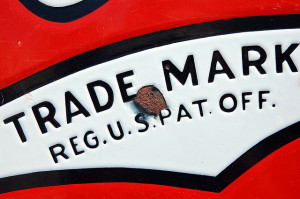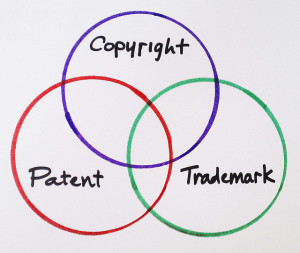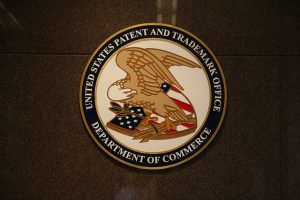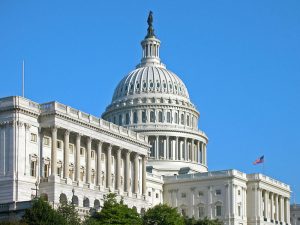The Tempnology Trademark Saga. When it comes to decisions on bankruptcy and trademark licenses, the In re Tempnology LLC bankruptcy case is the gift that keeps on giving.
- The Original. It all started in November 2015. Following Tempnology’s rejection of an agreement containing a trademark licensee, the New Hampshire Bankruptcy Court ruled that the licensee could no longer use the licensed trademarks.
- The Sequel. Then, in November 2016, the First Circuit Bankruptcy Appellate Panel (“BAP”) became the first appellate court to follow the Seventh Circuit’s 2012 decision in Sunbeam Products, Inc. v. Chicago American Manufacturing, LLC, 686 F.3d 382 (7th Cir. 2012) on the effect of rejection of a trademark license — namely, that rejection did not terminate the licensee’s rights to use the trademarks.
- In Sunbeam, the Seventh Circuit had expressly rejected the Lubrizol decision and its analysis of the effects of rejection (follow the link for a full discussion of the Sunbeam decision).
- The Sunbeam court held that rejection is a breach by the debtor and does not terminate the agreement or “vaporize” the rights of the non-breaching party. Critically, the Seventh Circuit allowed the non-debtor trademark licensee to continue using the licensed trademarks despite the debtor’s rejection of the trademark license.
- The BAP’s decision to follow Sunbeam raised the prospect that other courts might follow suit and start a trend away from Lubrizol.
- The Final Installment. Fast forward to January 12, 2018 when, on appeal from the BAP, the U.S. Court of Appeals for the First Circuit issued a 2-1 decision, reversing the BAP and affirming the Bankruptcy Court’s decision. Follow this link for a copy of the First Circuit’s full 34 page majority opinion and 7 page concurring and dissenting opinion.
- Keep reading for the juicy details but, to cut to the chase, the First Circuit unequivocally sided with Lubrizol on the impact of rejection, deepening the circuit split created by the Seventh Circuit’s Sunbeam decision.
Before turning to the First Circuit’s decision, let’s set the stage with a brief review of the underlying facts, a few more highlights from the Bankruptcy Court’s original decision, and the BAP’s subsequent take on these important issues.
The Bankruptcy Court’s Decision. In November 2015, the New Hampshire Bankruptcy Court issued a decision involving the effects of rejection by the debtor, Tempnology LLC, of a Co-Marketing and Distribution Agreement (“Agreement”). In re Tempnology, LLC, 541 B.R. 1 (Bankr. D.N.H. 2015). In the Agreement, Tempnology had granted Mission Product Holdings, Inc. (“Mission”) (1) a non-exclusive license to certain of Tempnology’s copyrights, patents, and trade secrets, (2) an exclusive right to distribute certain cooling material products that Tempnology manufactured, and (3) an associated trademark license. With one of its first motions in the bankruptcy case, Tempnology rejected the Agreement.
- The Bankruptcy Court held that the non-exclusive license to Tempnology’s copyright, patent, and trade secret rights was a license of “intellectual property” as defined in Section 101(35A) of the Bankruptcy Code, and that Mission’s right to continue to use that IP was protected under Section 365(n). However, the Bankruptcy Court held that Mission’s exclusive distribution rights were not “intellectual property” under Section 101(35A) and were not protected under Section 365(n).
- The Bankruptcy Court also held that because trademarks were not included in Section 101(35A)’s definition of intellectual property, Mission’s trademark license rights were not protected by Section 365(n).
- On the impact of rejection, the Bankruptcy Court followed the Lubrizol decision and held that the rejection of the Agreement meant that Mission lost both the exclusive distribution rights and the trademark license rights.
- The details on the Bankruptcy Court’s decision are at this prior post, entitled “A Reminder Of The Limits Of Section 365(n)’s Licensee Protection.”
The Bankruptcy Appellate Panel Decision. Mission appealed the Bankruptcy Court’s decision to the BAP. On November 18, 2016, the BAP issued a decision affirming in part and reversing in part the Bankruptcy Court’s decision. In re Tempnology LLC, 559 B.R. 809 (1st Cir. BAP 2016).
- The BAP affirmed the Bankruptcy Court’s holding that the exclusive distribution rights in the Agreement were not intellectual property as defined in the Bankruptcy Code and were not protected by Section 365(n).
- The BAP also agreed that Section 365(n) did not protect Mission’s rights as a trademark licensee, ruling that the Bankruptcy Court had correctly held that Section 101(35A)’s definition of “intellectual property” excludes trademarks.
- On the trademark point, Mission urged the BAP to follow the equitable approach that Judge Ambro suggested in his concurring opinion in the Third Circuit’s decision in In re Exide Techs., 607 F.3d 957 (3d Cir. 2010). That would let bankruptcy courts fashion equitable protections for rejected trademark licensees.
- The BAP declined to follow either that approach or the one taken by the New Jersey Bankruptcy Court in In re Crumbs Bake Shop, 522 B.R. 766 (Bankr. D.N.J. 2014), which had effectively applied Section 365(n) to trademarks. (For more on the Crumbs Bake Shop and Exide Techs. decisions, take a look at this earlier post.)
- The BAP then considered the Seventh Circuit’s Sunbeam decision and, in a major shift, followed its analysis on the effect of rejection on a trademark license agreement. It thus held that Mission could continue to use the licensed trademarks.
- For more information on the BAP decision, you can read this prior post, entitled “A Beam Of Sun For Trademark Licensees: Another Appellate Court Holds Rejection Does Not Terminate A Trademark Licensee’s Rights.”
The Main Event: The First Circuit’s Decision. With the background covered, let’s dig into the First Circuit’s decision. The BAP made Sunbeam front and center, so a big question was whether the First Circuit would follow Sunbeam and affirm the BAP’s decision, follow Lubrizol and affirm the Bankruptcy Court’s decision, or perhaps go with the equitable approach discussed by Judge Ambro.
A Notable Section 365(n) Analysis. Before turning to Sunbeam, the First Circuit started with a fairly extensive Section 365(n) analysis, worth examining given how few circuit court decisions address Section 365(n) at all.
- The Court first agreed with the BAP and the Bankruptcy Court that neither the exclusive distribution rights nor the trademarks are “intellectual property” under Section 101(35A) and therefore neither has Section 365(n) protections.
- The First Circuit likewise concluded that the exclusivity rights protected by Section 365(n) are limited to IP license rights only and do not extend to distribution rights.
- The Court also held that a licensee’s right to the “embodiment of such intellectual property” in Section 365(n)(1)(b) is a limited concept (and a term of art) that does not extend to all the goods Mission sought to distribute:
A few common themes appear in these explanations. First, the pre-petition agreement must give the licensee access to the embodiment of intellectual property. Second, an embodiment of intellectual property is a tangible or physical object that exists pre-petition. Third, an embodiment of intellectual property is something inherently limited in number — it is a prototype or example of a product, but does not include all products produced using the intellectual property. Finally, we can infer that the purpose of this provision is to allow the licensee to exploit its right to the underlying intellectual property.
The Negative Covenant Issue. The First Circuit dismissed Mission’s arguments that the case implicated the enforceability of all negative covenants. The Court commented that the Bankruptcy Code might protect from rejection some negative covenants such as confidentiality, but only if they do not materially restrict the debtor’s reorganization, are closely tied to the IP license, and are necessary to implement the terms of the IP license.
The Equitable Treatment Discussion. After agreeing with the BAP (and also Sunbeam) that Sections 101(35A) and 365(n) do not protect trademark licensees, the Court held that courts could not use equitable considerations to protect trademark licensees.
- The majority opinion rejected the dissent’s contrary view, which was based on Congress’s decision to defer action on trademark licenses in Section 365(n) “to allow the development of equitable treatment of this situation by bankruptcy courts,” as the Senate Report had stated.
- The First Circuit held that when Congress intended courts to use equitable powers, it included specific language in the text of the relevant Bankruptcy Code section, and it had not done that in Section 365(n).
- The Court also believed it would be difficult to weigh the equities, given the long-term nature of a trademark license relationship, and courts could misjudge how those burdens might play out in the future.
Taking On Sunbeam. The First Circuit’s biggest divergence from the BAP was on the issue of the effect of rejection under Section 365(g). The Court’s main rationale for following Lubrizol and not Sunbeam was its view that the Sunbeam approach would burden the debtor, as trademark owner, with monitoring and controlling the quality of the trademarked goods — duties imposed under trademark law — despite having already rejected the trademark license. It is worth reviewing the First Circuit’s analysis on this crucial point at some length:
Of course, to be precise, rejection as Congress viewed it does not “vaporize” a right. Rather, rejection converts the right into a pre-petition claim for damages. Putting that point of vocabulary to one side, and leaving open the possibility that courts may find some unwritten limitations on the full effects of section 365(a) rejection, we find trademark rights to provide a poor candidate for such dispensation. Congress’s principal aim in providing for rejection was to “release the debtor’s estate from burdensome obligations that can impede a successful reorganization.” Bildisco & Bildisco, 465 U.S. at 528. Sunbeam therefore largely rests on the unstated premise that it is possible to free a debtor from any continuing performance obligations under a trademark license even while preserving the licensee’s right to use the trademark. See Sunbeam, 686 F.3d at 377. Judge Ambro’s concurrence in In re Exide Technologies shares that premise. See 607 F.3d at 967 (Ambro, J., concurring) (assuming that the bankruptcy court could allow the licensee to retain trademark rights even while giving the debtor “a fresh start”).
Careful examination undercuts that premise because the effective licensing of a trademark requires that the trademark owner — here Debtor, followed by any purchaser of its assets — monitor and exercise control over the quality of the goods sold to the public under cover of the trademark. See 3 J. Thomas McCarthy, McCarthy on Trademarks & Unfair Competition § 18:48 (5th ed. 2017) (“Thus, not only does the trademark owner have the right to control quality, when it licenses, it has the duty to control quality.”). Trademarks, unlike patents, are public-facing messages to consumers about the relationship between the goods and the trademark owner. They signal uniform quality and also protect a business from competitors who attempt to profit from its developed goodwill. See Societe Des Produits Nestle, S.A. v. Casa Helvetia, Inc., 982 F.2d 633, 636 (1st Cir. 1992). The licensor’s monitoring and control thus serve to ensure that the public is not deceived as to the nature or quality of the goods sold. Presumably, for this reason, the Agreement expressly reserves to Debtor the ability to exercise this control: The Agreement provides that Debtor “shall have the right to review and approve all uses of its Marks,” except for certain pre-approved uses. Importantly, failure to monitor and exercise this control results in a so-called “naked license,” jeopardizing the continued validity of the owner’s own trademark rights. McCarthy, supra, § 18:48; see also Eva’s Bridal Ltd. v. Halanick Enters., Inc., 639 F.3d 788, 790 (7th Cir. 2011) (“[A] naked license abandons a mark.”); Restatement (Third) of Unfair Competition § 33 (“The owner of a trademark, trade name, collective mark, or certification mark may license another to use the designation. . . . Failure of the licensor to exercise reasonable control over the use of the designation by the licensee can result in abandonment . . . .”).
The Seventh Circuit’s approach, therefore, would allow Mission to retain the use of Debtor’s trademarks in a manner that would force Debtor to choose between performing executory obligations arising from the continuance of the license or risking the permanent loss of its trademarks, thereby diminishing their value to Debtor, whether realized directly or through an asset sale. Such a restriction on Debtor’s ability to free itself from its executory obligations, even if limited to trademark licenses alone, would depart from the manner in which section 365(a) otherwise operates.
The Court also raised the specter of a slippery slope:
And the logic behind that approach (no rights of the counterparty should be “vaporized” in favor of a damages claim) would seem to invite further leakage. If trademark rights categorically survive rejection, then why not exclusive distribution rights as well? Or a right to receive advance notice before termination of performance? And so on.
The First Circuit concluded its Sunbeam analysis this way:
In sum, the approach taken by Sunbeam entirely ignores the residual enforcement burden it would impose on the debtor just as the Code otherwise allows the debtor to free itself from executory burdens. The approach also rests on a logic that invites further degradation of the debtor’s fresh start options. Our colleague’s alternative, “equitable” approach seems similarly flawed, and has the added drawback of imposing increased uncertainty and costs on the parties in bankruptcy proceedings. For these reasons, we favor the categorical approach of leaving trademark licenses unprotected from court-approved rejection, unless and until Congress should decide otherwise. See James M. Wilton & Andrew G. Devore, Trademark Licensing in the Shadow of Bankruptcy, 68 Bus. Law. 739, 771-76 (2013).
Where Does Tempnology Leave Trademark Licensees? The First Circuit’s decision is bound to cause trademark licensees to worry anew about the risks of a licensor bankruptcy, after what had seemed to be a trend toward protecting trademark licensees. Although the circuit split remains, and at least two circuit judges have written separate opinions to argue for protecting trademark licensees through a court’s equitable powers, the First Circuit’s decision is a forceful endorsement of Lubrizol and the complete termination of a licensee’s trademark rights upon rejection.
Is there any hope for trademark licensees?
- Other circuits, notably the Second and Third Circuits where many business bankruptcy cases are filed, have yet to weigh in.
- Congress has from time to time proposed changes to Sections 101(35A) and 365(n) that would give some Section 365(n) protection to trademark licensees, but to date all of those bills have stalled.
- With a now more prominent circuit split, the U.S. Supreme Court might consider taking up the issue, possibly even in the Tempnology case if a certiorari petition were filed. That said, cert petitions are rarely granted so the split could remain for some time.
Conclusion. The First Circuit’s decision to follow Lubrizol and reject Sunbeam reinforces the existing circuit split. Will its extensive trademark analysis be more persuasive to subsequent courts? It will be interesting to see how other courts, especially Courts of Appeals, come down on the effects of rejection and the rights of trademark licensees. Stay tuned.
Image courtesy of Flickr by Blondinrikard Fröberg

